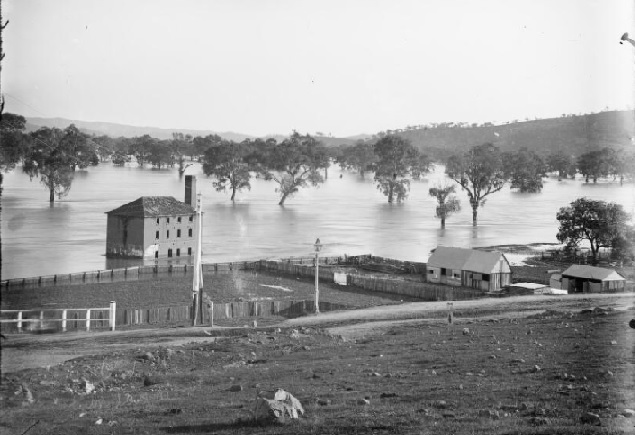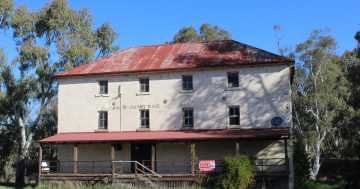
Gundagai’s oldest surviving building, the Old Mill, seen here surrounded by water during the 1900 flood, has been the focus of attention in the town lately with plans afoot to develop a masterplan and attract funding for redevelopment of the site. Photo: Charles Gabriel/National Library of Australia.
A building in Gundagai that’s outlived generations of residents looks likely to push through a few more if a planned redevelopment of the site goes ahead.
Cootamundra Gundagai Regional Council (CGRC) has been canvassing the community for options to revitalise Gundagai’s oldest building – the Old Mill – to develop a masterplan and business case for the building.
The old steam flour mill was built on the bank of Morby’s Creek in 1849, by Mr John Dillon Morley for local entrepreneurs Edward Flood and Thomas Hanley, whose vision for the Murrumbidgee was fields of golden wheat.
It was the first flour mill in Gundagai and now at 175 years, remains the only surviving representative of the original Gundagai township on the river flat, which survived the town’s many floods, including the great floods of 1852, 1853, 1870, and 1925.
While Flood and Hanley milled local flour until 1918, the building was then sold and converted to a freezing works by Messrs Regan and Davis in 1918 where in 1921 rabbiters were fetching 15 pence per pair for rabbits.
A few years later The Adjungbilly Freezing Company purchased the business and the major activity at the mill was the freezing of rabbits for export.
Later the building was sold to wool and skin buyers W T Ballard & Sons who used the location to store the wool and hides.
Today, but for a few patches in spots where the floods knocked holes in the walls, she remains a two-storey towering symbol of the town’s tenacity and resilience since it was first settled in earnest in 1838.
Now the townspeople are being asked what they’d like to see happen to the building, with the council’s sights firmly set on applying for grant funding for future development.
Community engagement including drop-in consultation sessions and an online survey ran in tandem with a two-day visit to the town in August by architectural firm S2 and business consultants Sparrowly Group.
According to CGRC, all the gathered information will be synthesised, and a list of possible options developed and shared not only with council, but key stakeholders to develop the final two options that will form the masterplan and business cases.
Any redevelopment of the site will consider the potential community use of the site, as well as any commercially focused developments.
It will also allow for ongoing maintenance and operating costs to be recovered and the opportunity to attract visitors to the area.
Original Article published by Edwina Mason on About Regional.








